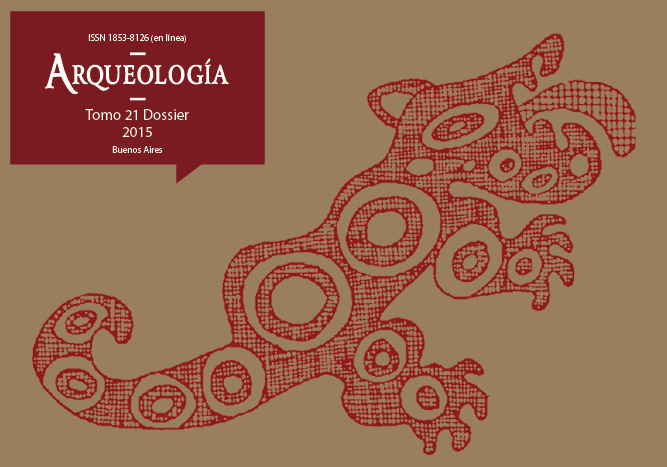Social differentiation’s evidence in the Aguada Orilla Norte cemetery’s mortuary contexts (Hualfín valley, Catamarca)
Keywords:
Hualfín valley, Aguada’s mortuary contexts, Inequality, Heterogeneity
Abstract
This paper applies Bourdieu concepts of social field, habitus and symbolic capital, an archaeological empirical basis, as a tool that could allow establishing the existence of inequality and heterogeneity. We believe that making distinctions in a bourdiano sense makes visible the actions’ intentionality and that this is an important indicator of the existence of complexity in the game of social distinction. We assume that the Aguada Orilla Norte cemetery in Hualfin Valley (Catamarca) is representative of a community living in the area during the Middle Period. Evidence of this Aguada burial site was treated in previous papers, defining the existence of three groups of graves interpreted as representative of sectors that were socially reproduced during the development of the Middle Period in Hualfin Valley. Therefore considering the existence of complexity involves establishing the existence of social inequality and heterogeneity. Here we look for indicators, which at the level of funerary offerings could be demonstrative of diversified activities and inequality.Downloads
Download data is not yet available.
How to Cite
Baldini, M. I., & Sempé, M. C. (1). Social differentiation’s evidence in the Aguada Orilla Norte cemetery’s mortuary contexts (Hualfín valley, Catamarca). Arqueología, 21(3), 139-167. https://doi.org/10.34096/arqueologia.t21.n0.2380
Section
Articles
Authors who publish in this journal agree to the following conditions:
- Authors retain copyright and yield to the journal right of first publication with the work registered with attribution license Creative Commons, which allows third parties to use the published always mentioning the authorship of the work and first publication in this magazine.
- Authors can make other independent and additional contractual arrangements for the non-exclusive distribution of the version of the article published in this issue (p. Eg., Inclusion in an institutional repository or publish it in a book), provided that clearly indicate that the work was published for the first time in this magazine.
- It allows and encourages the author / s to publish their work online (eg institutional or personal pages) before and during the process of revision and publication, as it can lead to productive exchanges and greater and more rapid dissemination of work published (See The Effect of Open Access).





(1)13.png)






1.jpg)
1.jpg)


13.png)
1.png)


(1)1.png)









